PERSPECTIVE: Connecticut at the Start of this Decade
/by M. Jodi Rell At the start of this decade, the beginning of her final year as Governor of Connecticut, M. Jodi Rell addressed a joint session of the House and Senate and delivered her State of the State address on February 3, 2010. Her remarks that day:
We gather today to mark the opening of the 2010 legislative session and we do so at a time of continued challenge, continued anxiety.
None of us need to be reminded of the unparalleled struggles that we have endured over the last 22 months. Our nation has been in the grip of an economic crisis unlike any witnessed in generations.
The stark reality of our struggles is all too real. Housing prices are down; unemployment is up. The value of savings and retirement accounts are down; mortgage foreclosures are up. The amount of debt at all levels of government is up.
Yes, the statistics are real – and our emotions are raw. People are uncertain about the future. They are frustrated and angry about the present. And they have every right to be.
The people of Connecticut are looking to us to help them. They are looking to us to lead. They are looking to us to right our ship of state.
They don’t want to hear shallow lamentations of sympathy or understanding from their elected officials. They want action and assistance. And they want an end to the theatrical histrionics of political press conferences and partisan pinball. They want us to act like adults.
President Obama spoke eloquently about this last week in his State of the Union address. He spoke of the nature and nastiness of politics in our nation’s capital. Frankly, he could have been speaking of our own State Capitol here in Hartford.
I will echo his sentiment and be a bit more blunt: we need to stop the game-playing and name-calling and constant bickering that has come to consume too many at the Capitol. There is no room for such pettiness on the playground; there certainly shouldn’t be in the Legislature, the Governor’s Office or the courts either.
None of us are blameless in this regard. All of us must accept our responsibilities to treat one another with respect and to listen, truly listen, to those whose views or proposals or policies may differ from our own.
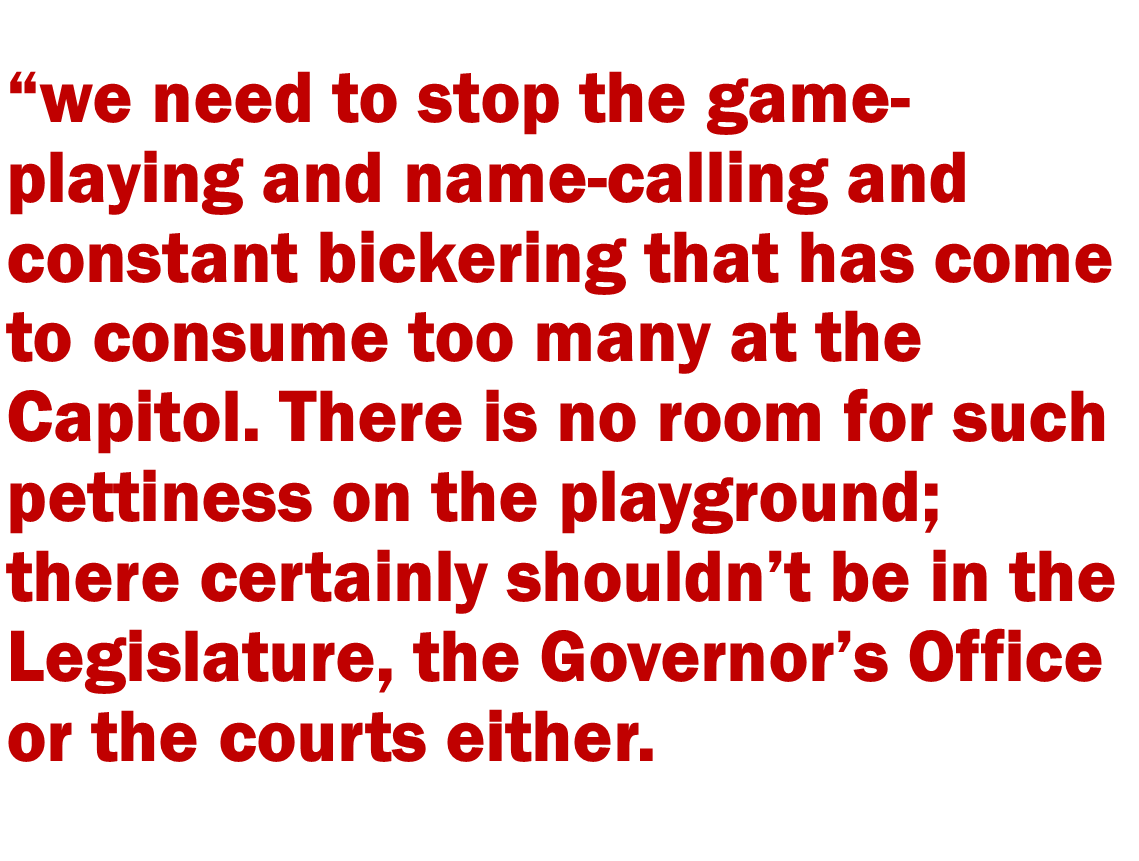 In the end we may not agree with one another, but we should respect one another. We need not speak glowingly of each other or of each other’s ideas, but we must speak civilly. Let us replace acrimony with accommodation, let us set aside the difficulties and divisions of the last year and commit ourselves, truly commit ourselves, to working with one another.
In the end we may not agree with one another, but we should respect one another. We need not speak glowingly of each other or of each other’s ideas, but we must speak civilly. Let us replace acrimony with accommodation, let us set aside the difficulties and divisions of the last year and commit ourselves, truly commit ourselves, to working with one another.
For we have much to do – and our work begins in earnest today.
Thousands of trees will be felled for the hundreds of bills that will be filed on dozens of topics. But our efforts, our energies, this session should be focused on just two core issues: creating jobs and balancing our state budget.
Too many people have lost their jobs and a lost job means a lost paycheck, lost security, lost dignity and lost hope for the future. Families across our state are hurting and suffering and struggling.
We need to get to work to put the people of Connecticut back to work. Today I am announcing new proposals that will allow us to spur job creation now and chart a course of economic vitality and growth for years to come. The most critical problem facing businesses today, particularly the small and medium businesses that are our main engines of growth, is credit availability. Employers need loans and financing to buy equipment and inventory, expand space or just to meet daily cash flow demands. As we all know the credit crunch has crippled a great many employers. Financing that was readily available in years past is difficult, if not impossible, to find.
This is a national problem but we need to find a Connecticut solution to it.
I am calling for the creation of the new Connecticut Credit Consortium - a $500 million dollar partnership between the state --and Connecticut banks to substantially boost credit availability. I propose canceling $100 million in old bond authorizations and instead use the funds for the Consortium. Our $100 million dollars will leverage at least $400 million dollars from banks all across our state. That’s $500 million that will immediately be put to work to help businesses save and create jobs. And here’s one key provision: $25 million of the state’s $100 million will be targeted strictly for small businesses for micro or small loans.
As I have said before, small businesses are the chief job creators. That is not in dispute. And neither is their need for credit. Their lifeline is credit – and that lifeline has been cut off.
Work with me to open up that lifeline to create jobs and pass into law the Connecticut Credit Consortium. I also ask you to help in passing other proposals I am offering to reinvigorate our economy and create jobs.
The first one modifies the relatively new, but little used job creation tax credit. It was aimed at large corporations but they are not availing themselves of it. So I am proposing that we change it to benefit small businesses with twenty-five or fewer employees.
Because most small business are limited liability corporations - LLCs - and S corps, we will, under my proposal, allow, for the first time, a credit against an employer’s personal income tax liability. The credit will be for $2,500 per year for three years for each new job created. $10 million dollars is already in the budget for this proposal – and up to 4,000 new jobs could be created this year alone.
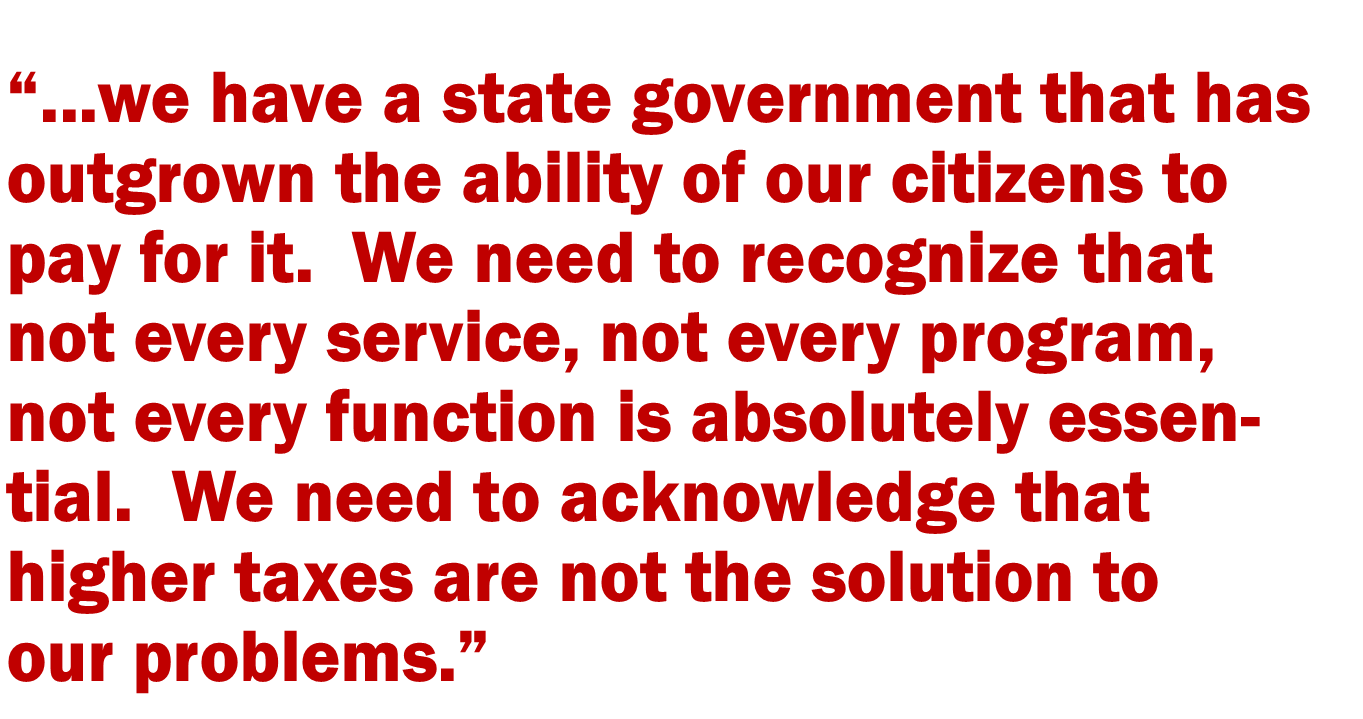 One area where we see a large number of new start-ups of small businesses is in green technology and clean, renewable energy. Kermit the Frog had it wrong all these years, I’m afraid. It is easy to be green. Solar, fuel cells, wind turbines and geothermal – all hold the keys to economic and energy prosperity.
One area where we see a large number of new start-ups of small businesses is in green technology and clean, renewable energy. Kermit the Frog had it wrong all these years, I’m afraid. It is easy to be green. Solar, fuel cells, wind turbines and geothermal – all hold the keys to economic and energy prosperity.
That is why I am proposing that we expand our sales tax exemption to include machines, equipment, tools, materials, supplies and fuels used in the renewable energy and green technology.
This is in addition to the work of my Electric Vehicle Council that is preparing the way for green business opportunities for the arrival of zero-emission, electric vehicles. And there’s one more component we still need to address – and it’s a critically important component: our workforce.
We are recognized around the nation for the high quality and talent of our workforce. The best and brightest are found right here in Connecticut. But we need to do more to keep them here. We want our children to be educated here and start their work life here and then raise their own families here.
And our companies will only succeed if they have the qualified, trained employees they need. That is why I am proposing a new loan forgiveness program for students who stay and work in Connecticut after they graduate from college with a degree or certificate in green technology, renewable energy, life sciences or health information technology.
They will receive a $2,500 annual forgiveness for each of four years if they have a baccalaureate or higher degree or $2,500 a year for two years with an associate degree. Join me into making this loan forgiveness program a reality.
And there’s something we can do – must do - for all businesses and for all of our citizens: bring certainty and sanity to our state’s fiscal situation. The protracted discussions and negotiations, along with the fevered partisan debate that characterized last year’s budget, cannot be repeated. It was hardly state government’s finest moment.
Today marks a new session, a new start and a new effort to work together to honestly confront the undeniable realities of shrinking revenues and ever-rising costs. A little more than seven months into a two year budget and we are already facing a $500 million dollar plus deficit. A deficit due in large part to drastic reductions in the collection of the income tax and sales tax. Why? Because if you do not have a job you do not have any income on which to pay tax and you have no money to spend on items that carry a sales tax. We have 94,000 people in this state who have lost their jobs since the recession began in March, 2008. 94,000.
The recovery will be long and painfully slow and there will be a "new normal" when it does take full effect. We in state government need a "new normal" as well. Because we have a state government that has outgrown the ability of our citizens to pay for it. We need to recognize that not every service, not every program, not every function is absolutely essential. We need to acknowledge that higher taxes are not the solution to our problems.
It’s common sense: the taxes we already have on our books are not bringing in the revenue we thought they would, so why would new and higher taxes be the answer?? They’re not.
So I say no. No on behalf of the 94,000 people who have lost their jobs. No, on behalf of the businesses that are struggling to keep their doors open. No, on behalf of all the families who struggle to make ends meet day in and day out. We do need to say yes to some basic structural reforms, however.
People look at Washington and the spending spree they have been on of late. They see weekly stories about borrowing a few hundred billion for this, a few hundred billion for that… and they react with horror. They worry about the bill that will be handed to their children and grandchildren for all that borrowing. We have our own concerns here in Connecticut since we have one of the highest debt rates in the country. That’s why it is so critical that we tackle this year’s deficit head-on and honestly deal with it, not borrow to cover it.
I am proposing that we put into place a new protection: any bond authorization that has been on the books for five years or more without being allocated by the State Bond Commission will automatically be canceled. We have billions and billions of dollars of bonds that have been authorized by the legislature over the years. Some, are for worthwhile statewide needs; many are not. But all could bankrupt us and all are counted by credit rating agencies as liabilities. If a project is not worthy enough to be approved after five or more years then we probably shouldn't bond for it and pay twenty years of interest on it.
And there is another financial Sword of Damocles hanging over the state’s head that we literally can no longer afford to ignore: our unfunded state employee pension liabilities and unfunded retiree health care costs. The tab for our unfunded pension liabilities is a staggering $9.3 billion. The price tag for health care benefits for retired state employees is an almost incomprehensible $24.6 billion. This mounting debt has been virtually ignored for decades. Ignorance may be bliss, according to the old adage, but that bliss carries a price - too high a price.
For that reason I am establishing a working group, with representatives from the Treasurer’s and Comptroller’s Offices, OPM, SEBAC, accountants, actuaries and others to propose short and long term plans for addressing our unfunded liabilities. Their first report will be due by July 1st. I am also offering a proposal today that contains an automatic requirement that half of any budget surplus declared by the Comptroller in her January or May report be automatically deposited into the state’s Rainy Day Fund.
When I was sworn in as Governor on July 1, 2004 our Rainy Day Fund had a zero balance. Zero. I made it a priority to restore the fund, the state’s nest egg, and working with you, it was filled to its largest balance ever by 2008 – nearly $1.4 billion. I am proud of that effort. And it’s a good thing that we took that action because we are now in the midst of our "Rainy Day" – we’re using all of the Fund’s assets this year and next to balance our state budget.
But the Rainy Day Fund is a tempting, too tempting, target. There is never a shortage of people who enjoy spending money and never a dearth of people who are asking for it. Each dollar of surplus spent is one dollar less that can go into the Rainy Day Fund. So, let’s reduce temptation and ensure that half of any surplus declared in January or May be automatically deposited into the Fund. No diversions. No short-sighted thinking. No excuses.
We need to pass these proposals and to act now -- because the outlook for the future is fiscally challenging, to say the least. Early revenue shortfall projections for the outyears are in the billions of dollars.
The Rainy Day Fund will be empty. Federal stimulus grants will be gone. All our outside funds will have been swept. And yet employee, insurance, heating, fuel and other costs will continue to increase appreciably. Quite frankly, the dire circumstances we are facing today will pale in comparison to the challenges that will face the next Governor, the next Legislature.
Every action that we take this year, to finally get state spending under control will ease the budget pain that all will be feeling for the next few years.
So let me be clear about this: I intend to do everything in my power in my remaining months in office to make the changes that are needed to break insatiable spending habits and to make state government affordable once again.
It would not be fair to my successor – or yours - to simply ignore the fiscal problems that we have today and that we all know lie just ahead. We must deal with our current problems this session and develop a plan of action for new leadership next session.
So today I am proposing something rather unique – and rather necessary. Something that will build upon the important work begun by my administration and the legislature in streamlining state government. I am calling for the establishment of a 24-member commission to examine our government, top to bottom, to achieve efficiencies, eliminate redundancies and waste and reduce the size and cost of state government.
Every institution, every structure, service, program and delivery mechanism will be evaluated. And it will be done in a non-partisan manner by all 3 branches of government. Six members will be appointed by me to represent the executive branch. Six will be appointed by the Chief Justice to represent the judicial branch, and six each will be appointed by the Democratic and Republican leadership of the Legislature. There will be three chairs, one from each branch of government. The commission will have until August 30th to conduct their work, the nature of which is clearly spelled out in my legislation. It includes: agency mergers or eliminations; administrative overhead; outdated functions or services and better utilization of information technology. That’s step one.
Step two is a separate four-person board which is established on September 1st. So as to take the politics out of the equation, all branches and both sides of the political aisle are again equally represented. They will review the work and recommendations of the commission. They will also hold hearings and automatically accept those recommendations unless 3 out of 4 members vote to amend or reject any specific recommendation. Their work must be concluded by December 1st. Those recommendations that are administrative in nature will be implemented by the Governor or Chief Justice, as appropriate. The Legislature will have 45 days once the regular session starts next January to vote on the final recommendations – without amendment.
And every step taken will be done in open session, with all documents, phone calls, meeting notes and correspondence open for public inspection. The timeline is tight because we want the recommendations ready for the next Governor, the next Legislature. They will need the recommendations to grapple with the great fiscal challenges we will face. We owe it to them – and to those who pay for our government – our taxpayers – and those who are served by our government. Let the creation of this commission be one of the first bills you act upon so that its work can begin immediately.
And act quickly to fix and preserve the public financing law that so many of us championed and that takes special interest money out of campaigns. Dozens and dozens of candidates are running right now under one set of rules. It is very likely they may find themselves running under another set if we lose our court appeal.
Don’t let us return to the ways of the past. We have cleaned up government and we have cleaned up campaigns. Help me keep them clean. Act. Lead. I'm not scolding. I'm not lecturing. I'm beseeching you: Act. Lead --
On campaign finance reform, job creation and balancing the state budget. Those are the areas I have focused on and most of my proposals are paid for with existing funds. This is not the year for a panoply of expensive new proposals on a wide range of issues. We cannot afford them and the public is not crying out for them.
They want us to fix our economy, fix our state budget, jumpstart job creation and then stay out of their pockets as they start earning paychecks again. And they want us to do this while engaging, not fighting, one another. It’s not too much for them to ask. They put their trust in us – their public trust by electing us to office.
I am honored by that trust and I am proud to be the 87th Governor of this great state. I am proud of all that has been accomplished since I became Governor. Ethics and campaign finance reform. Civil unions. The Charter Oak program for the uninsured. A new hospital at our veterans’ home. New charter and magnet schools. Hundreds of new and refurbished rail cars, updated rail stations and new buses. Thousands of acres of farmland and open space preserved. Dozens of dairy farmers kept in business. College campuses that have been transformed. The list goes on – and it will be added to before I leave office next January.
There is no time for reflection, however, for much work remains ahead, and much history is yet to be written. You know, 2010 marks the 375th year of our great state. We are planning a number of festivities to celebrate all the people and events that have made Connecticut such a special place.
375 years of incredible history, with remarkable people and achievements. We begin the next chapter, the next 375 years of our history, today. I foresee a bright future for our state, but we must first meet the many challenges of today. We will continue to lead the nation in commerce, science, education, culture and so much more. We will rebuild our economy. We will create jobs. And we will put our state back on firm financial footing if we work hard and confront our problems with courage and common sense.
Our foundations are strong, our commitment resolute. The State of our State is challenged but hopeful. Extraordinary times call upon us to do our best. To accept challenges and triumph over them. And triumph we shall, if we work together, with respect and civility.
Before I conclude I would ask that we keep in mind some of our state’s newest heroes – the more than 600 members of the CT National Guard, who are heading to Afghanistan this week, for their deployment to that dangerous country. They are part of the largest deployment of Connecticut soldiers to ever serve overseas. I ask that you keep them and their families in your hearts and in your prayers.
I thank you for the honor of serving as your Governor and I ask you to join me as I say: God Bless the Great State of Connecticut.
____________________________
M. Jodi Rell served as a State Representative (1985-1995), Lieutenant Governor (1995-2004) and Governor of Connecticut (2004-2011). She was the second woman and first Republican woman to serve as governor of the state.



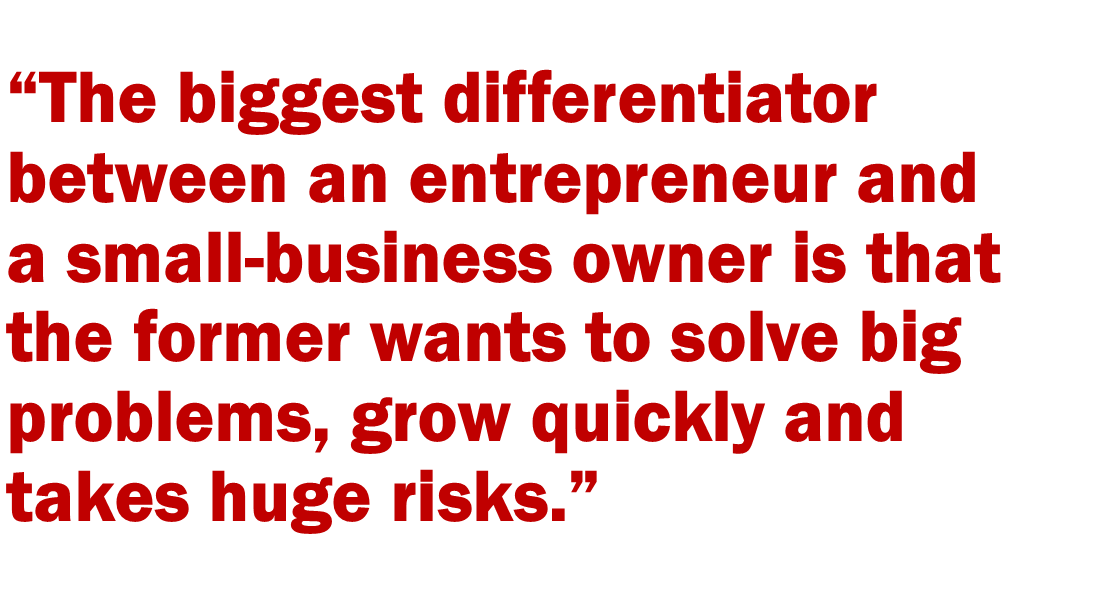 The biggest differentiator between an entrepreneur and a small-business owner is that the former wants to solve big problems, grow quickly and takes huge risks. Think Facebook, Google, and Tesla. Facebook has over two billion monthly users, and its mission is: “Give people the power to build community and bring the world closer together.” Google is the most visited website on the Internet. Its mission is: “To organize the world’s information and make it universally accessible and useful.” Founded in 2003, Tesla Motor’s mission is: “To accelerate the advent of sustainable transport by bringing compelling mass market electric cars to market as soon as possible.”
The biggest differentiator between an entrepreneur and a small-business owner is that the former wants to solve big problems, grow quickly and takes huge risks. Think Facebook, Google, and Tesla. Facebook has over two billion monthly users, and its mission is: “Give people the power to build community and bring the world closer together.” Google is the most visited website on the Internet. Its mission is: “To organize the world’s information and make it universally accessible and useful.” Founded in 2003, Tesla Motor’s mission is: “To accelerate the advent of sustainable transport by bringing compelling mass market electric cars to market as soon as possible.”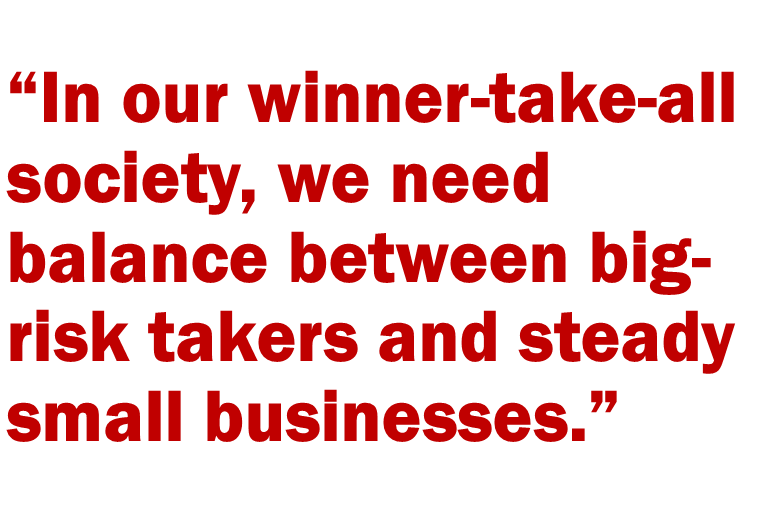
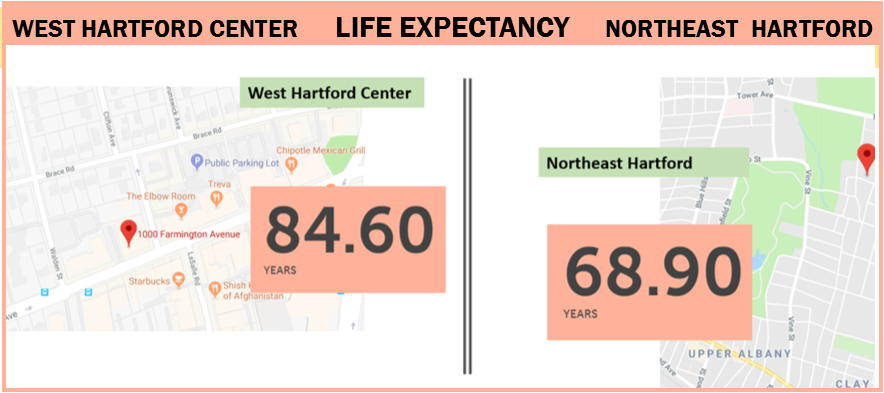 There is variation within cities and towns. In New Haven’s Newhallville neighborhood, life expectancy is 71.7 years. In the neighborhood next door, Prospect Hill, life expectancy is more than a decade longer: 82.3 years.
There is variation within cities and towns. In New Haven’s Newhallville neighborhood, life expectancy is 71.7 years. In the neighborhood next door, Prospect Hill, life expectancy is more than a decade longer: 82.3 years.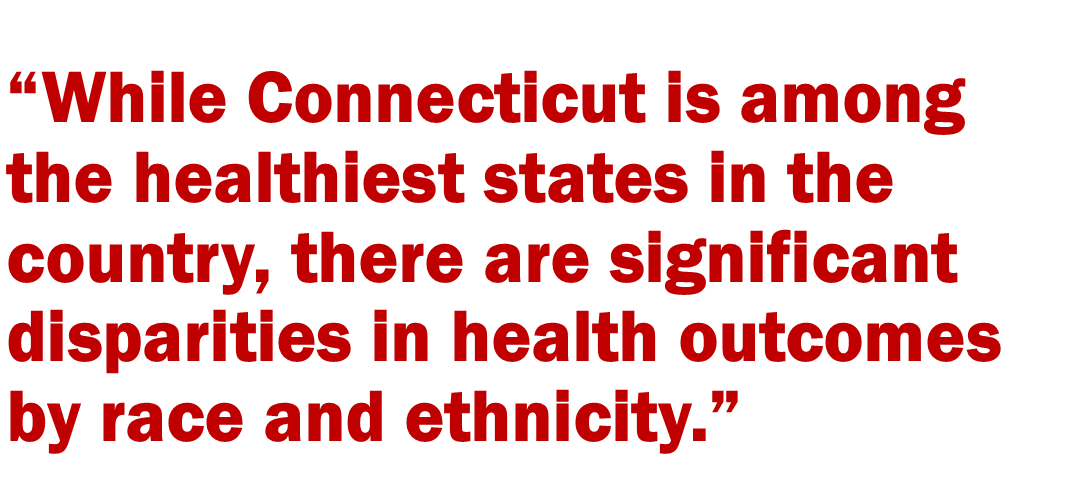


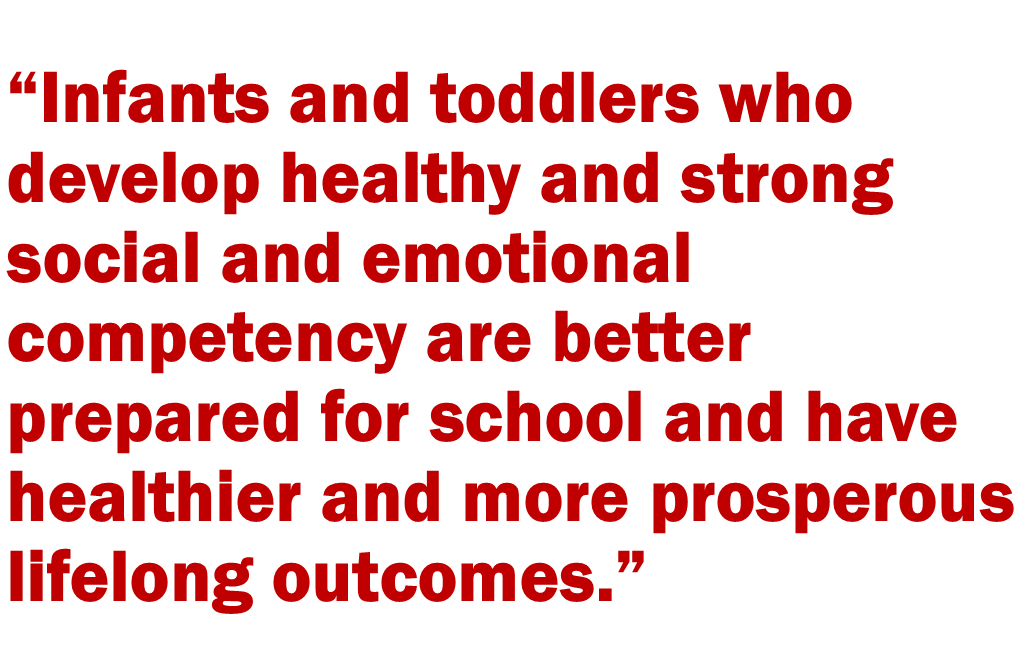 A System of Professional Endorsement is Improving Connecticut’s Workforce
A System of Professional Endorsement is Improving Connecticut’s Workforce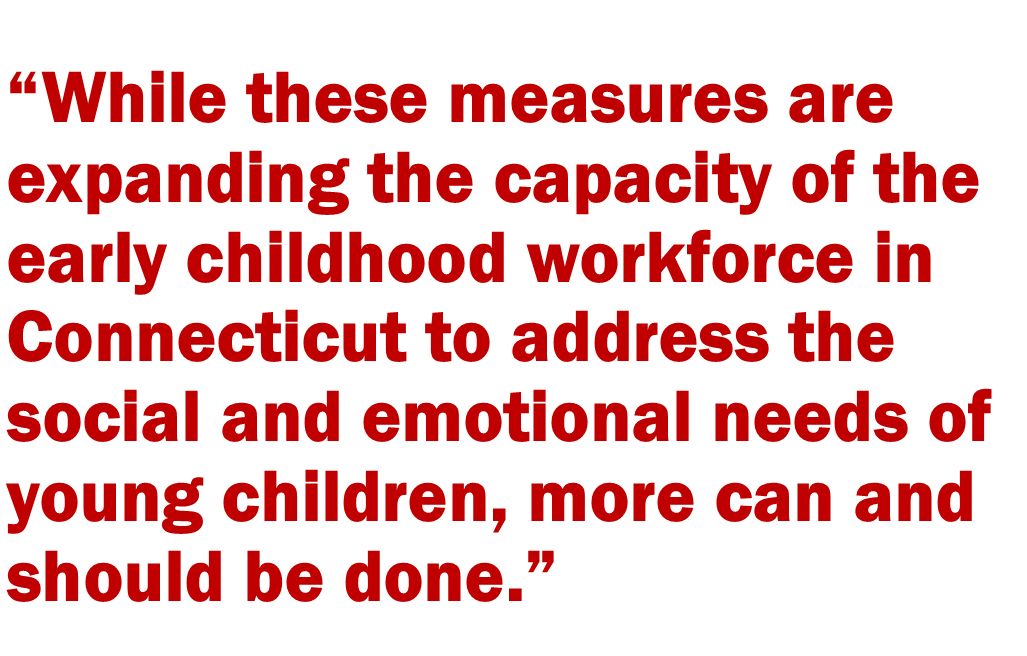

 One of the most common ways lawmakers in marijuana states have attempted to address traffic safety concerns is to establish an impairment threshold for marijuana, a ‘per se’ standard for it, (similar to the 0.08 BAC standards in every state for alcohol).
One of the most common ways lawmakers in marijuana states have attempted to address traffic safety concerns is to establish an impairment threshold for marijuana, a ‘per se’ standard for it, (similar to the 0.08 BAC standards in every state for alcohol).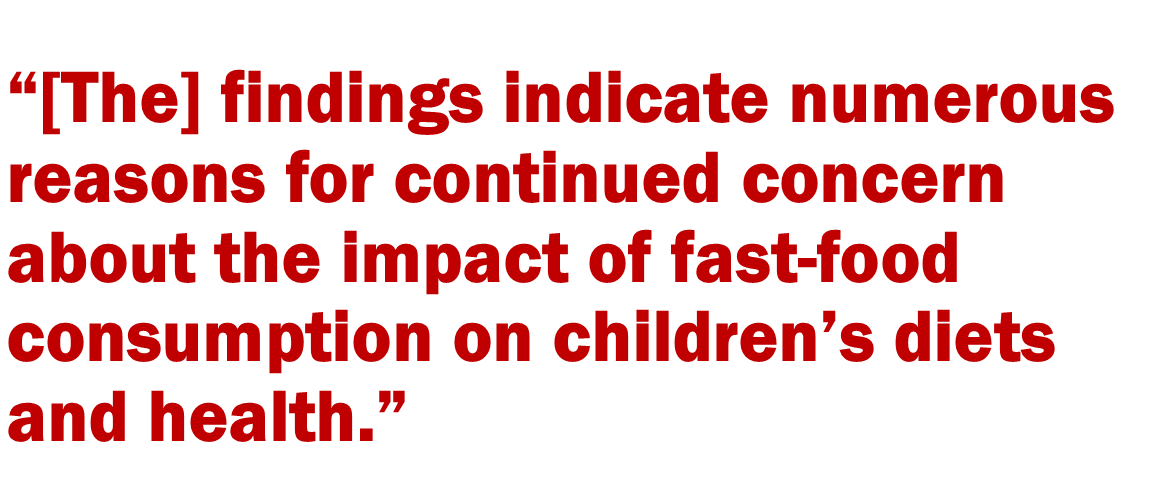 These numbers are high, but they correspond to previous research showing that on any given day, one-third of children consume fast-food… Furthermore, parents’ purchases of fast-food for their children increased significantly during the years examined, with parents reporting increased frequency of visits to most individual fast-food restaurants from 2013 to 2016…
These numbers are high, but they correspond to previous research showing that on any given day, one-third of children consume fast-food… Furthermore, parents’ purchases of fast-food for their children increased significantly during the years examined, with parents reporting increased frequency of visits to most individual fast-food restaurants from 2013 to 2016…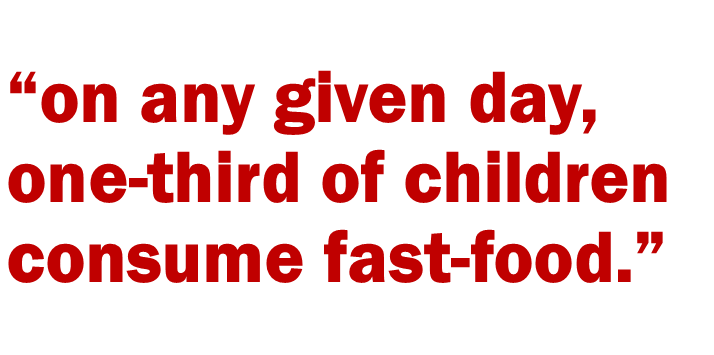
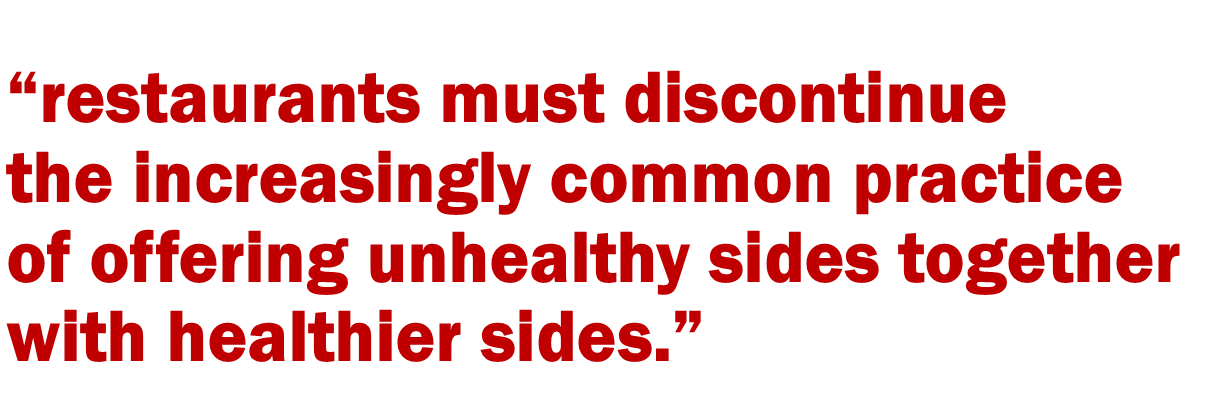 Unhealthy options, including main dishes, sides, and desserts, remain on kids’ meal menus at most restaurants, and purchases of a kids’ meal plus another menu item for their child have increased. Although future research is required to explain the reasons for these trends, they do indicate that restaurants’ voluntary pledges, as currently implemented, are unlikely to substantially reduce children’s fast-food consumption overall, or increase their selection of available healthier drink and side options.
Unhealthy options, including main dishes, sides, and desserts, remain on kids’ meal menus at most restaurants, and purchases of a kids’ meal plus another menu item for their child have increased. Although future research is required to explain the reasons for these trends, they do indicate that restaurants’ voluntary pledges, as currently implemented, are unlikely to substantially reduce children’s fast-food consumption overall, or increase their selection of available healthier drink and side options.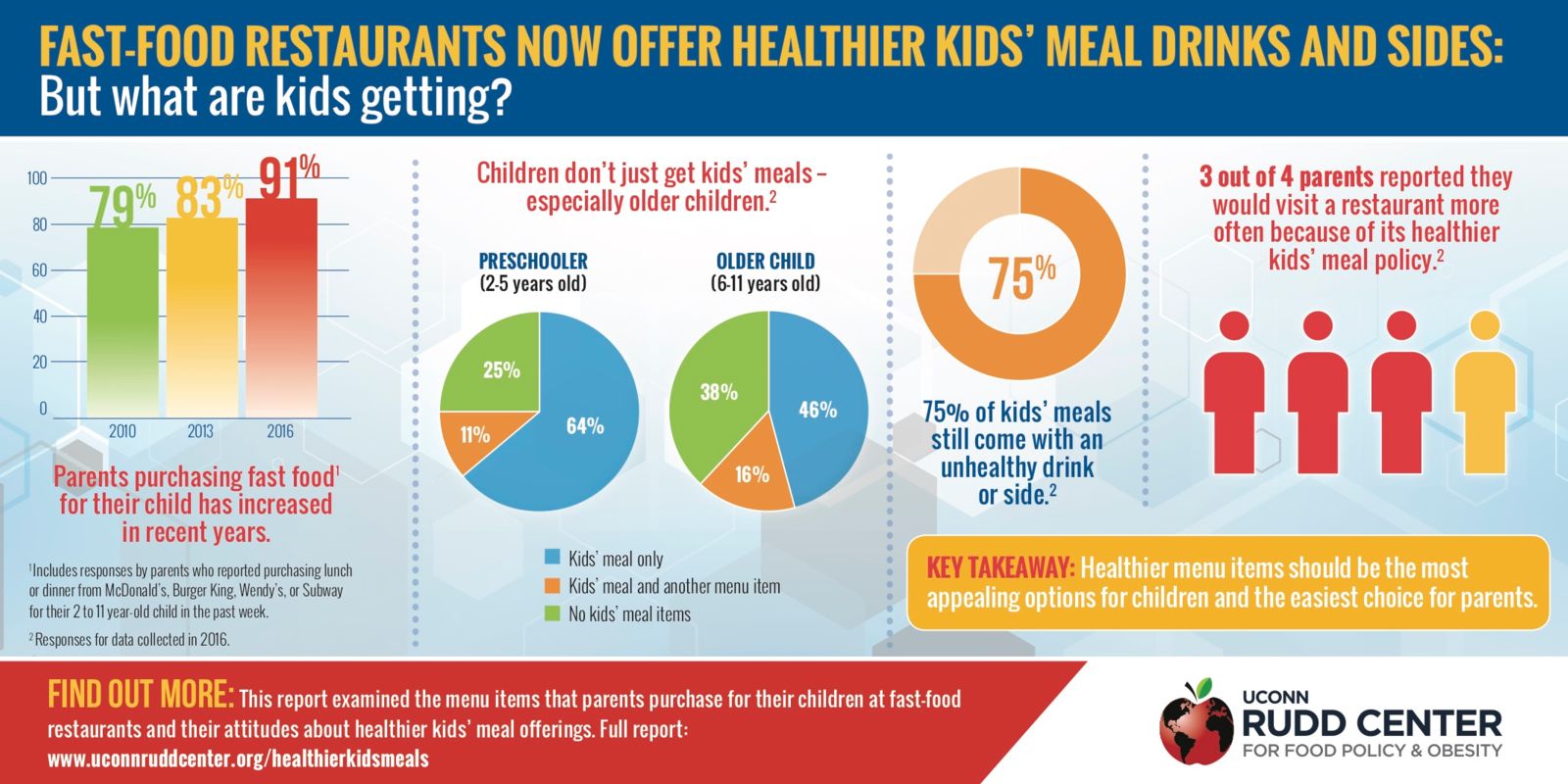
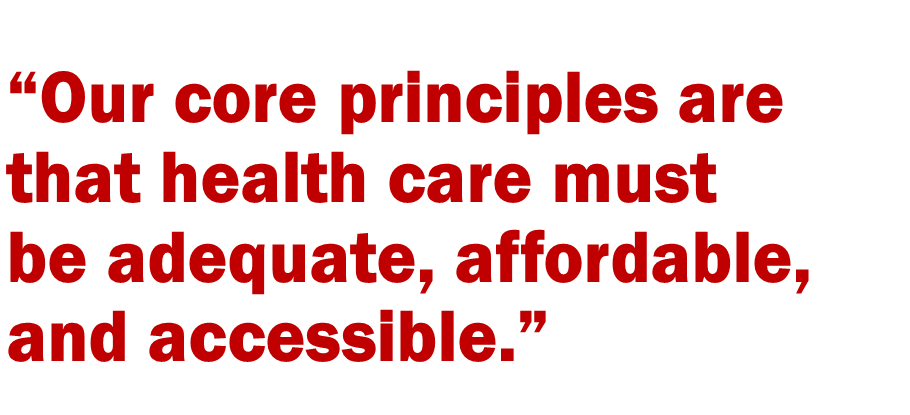 While we are pleased to see that you share our concerns about the potential impact of Texas v. U.S. on people with pre-existing conditions, as evidenced by your recent introduction of the Ensuring Coverage for Patients with Pre-Existing Conditions Act (S.3388), the safeguards presented in this legislation fall far short of the patient protections encompassed in existing law. This bill as written is far from an adequate replacement for the protections for individuals with pre-existing conditions that are provided under current law.
While we are pleased to see that you share our concerns about the potential impact of Texas v. U.S. on people with pre-existing conditions, as evidenced by your recent introduction of the Ensuring Coverage for Patients with Pre-Existing Conditions Act (S.3388), the safeguards presented in this legislation fall far short of the patient protections encompassed in existing law. This bill as written is far from an adequate replacement for the protections for individuals with pre-existing conditions that are provided under current law.

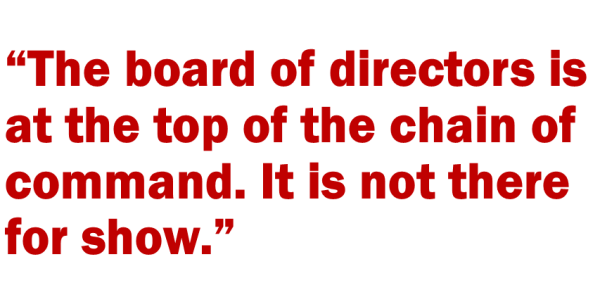
 Finally, there is the “Stupid Hat Syndrome.” I first heard this expression from a successful businessman, famously generous with both his money and his volunteer board service. He coined the phrase to express his frustration after years of observing “some of the smartest and most successful business people he knew join a nonprofit board and immediately put on their Stupid Hat.” In other words, they habitually checked their immense brain power and experience at the door. The Stupid Hat metaphor may be hard edged, but the phenomenon is real and all too commonplace in the sector. It’s the 800-pound gorilla in the corner, and it’s as true as the truism that in general “you get what you pay for.”
Finally, there is the “Stupid Hat Syndrome.” I first heard this expression from a successful businessman, famously generous with both his money and his volunteer board service. He coined the phrase to express his frustration after years of observing “some of the smartest and most successful business people he knew join a nonprofit board and immediately put on their Stupid Hat.” In other words, they habitually checked their immense brain power and experience at the door. The Stupid Hat metaphor may be hard edged, but the phenomenon is real and all too commonplace in the sector. It’s the 800-pound gorilla in the corner, and it’s as true as the truism that in general “you get what you pay for.”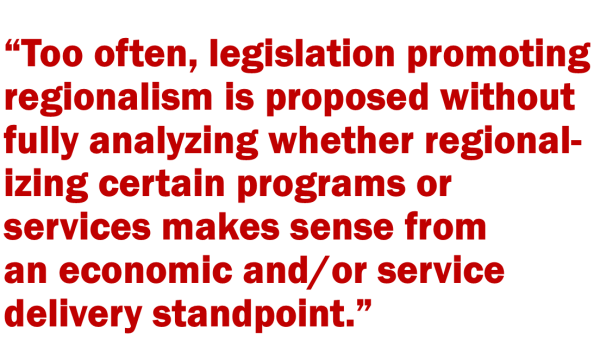 Several years ago, town leaders in Litchfield County implemented a program to share heavy equipment. Ten towns in the area benefit from this program, the Litchfield Hills Public Works Equipment Cooperative, which allows the towns to share major equipment for road maintenance. Two street sweepers and one catch basin cleaner were purchased through the program, which was made possible by a $700,000 grant the council received from the state’s Regional Performance Incentive Program.
Several years ago, town leaders in Litchfield County implemented a program to share heavy equipment. Ten towns in the area benefit from this program, the Litchfield Hills Public Works Equipment Cooperative, which allows the towns to share major equipment for road maintenance. Two street sweepers and one catch basin cleaner were purchased through the program, which was made possible by a $700,000 grant the council received from the state’s Regional Performance Incentive Program.



























